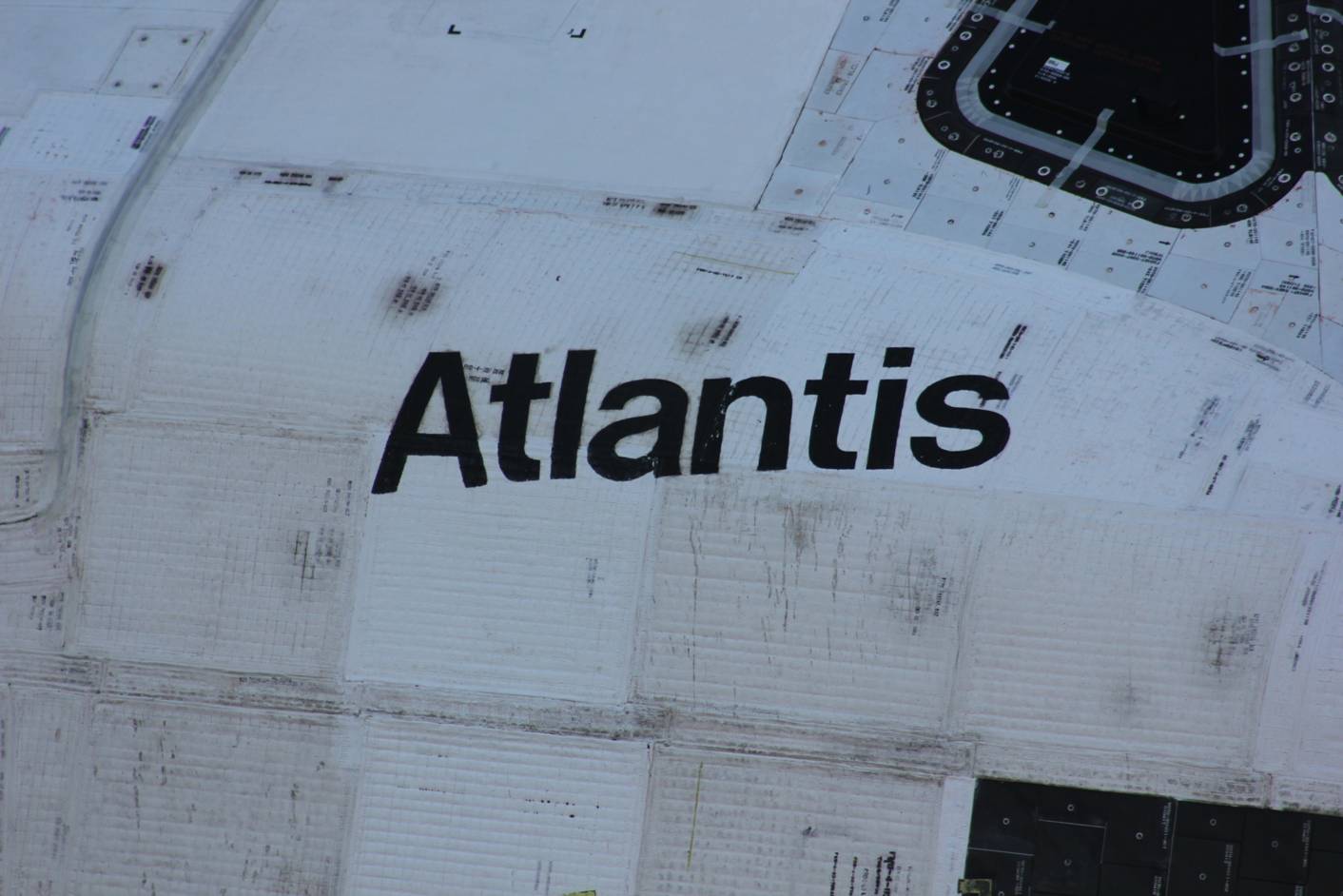
On Saturday, 29 June, after months of fanfare and almost two years since last exposed to the vacuum of space, Atlantis—NASA’s second-most-flown shuttle orbiter—will begin her final mission … to inspire a new generation of future scientists, engineers, astronomers, thinkers, dreamers, astronauts, and explorers. Within a dedicated $100 million facility at the Kennedy Space Center Visitor Complex (KSCVC) at Cape Canaveral, Fla., the Atlantis exhibit will tell the story of a machine which first docked with Russia’s Mir space station, which sent Magellan to Venus and Galileo to Jupiter, which completed a third of all International Space Station missions, and which, in May 2009, serviced the Hubble Space Telescope for the final time.
Fittingly, Atlantis’ final home is spectacular in appearance and impressive in scope. Equally fitting is that her final home should be the same location as where her final space voyage, STS-135, concluded in July 2011. “The stylized shape” of the exhibit center, explained KSCVC’s web page, “features two sweeping architectural elements, or ‘wings,’ in hues of orange and gold to represent the heat and the bright colors of re-entry. Special gray-colored tiling has been incorporated into the building’s design to represent the space shuttle tiles that protected the orbiter from the heat of re-entry.” After 32 missions into orbit, between October 1985 and July 2011, Atlantis truly deserves her place in history.
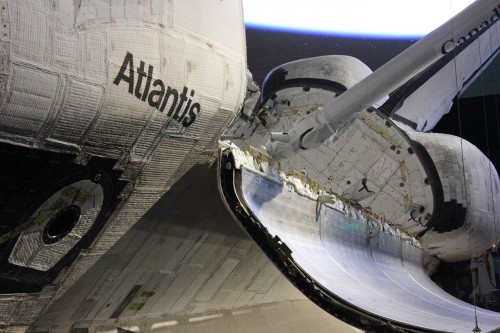
She was named in honor of a two-masted ketch, operated by the Woods Hole Oceanographic Institute from 1930 until 1966, which became the first vessel built specifically for interdisciplinary research in marine biology and geology and physical oceanography. During her time at sea, Atlantis and her scientists scored a number of impressive discoveries, not least of which was the identification and description of the first abyssal plain—the “Sohm Abyssal Plain,” located to the south of Newfoundland—in 1947. Today, she is owned by Argentina as a naval research vessel.
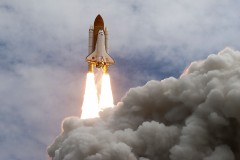
The construction of the spacegoing Atlantis got underway in January 1979, following a $1.9 billion contract award to Rockwell International to configure a structural test article into the future Challenger and build two additional orbiter vehicles, OV-103 and OV-104. The names “Discovery” and “Atlantis” were assigned to the new orbiters a few days after the award, in early February. A year later, in March 1980, engineers started the structural assembly of Atlantis’ crew compartment and over the next few years the vehicle grew—construction of her aft fuselage began in November 1981, her wings arrived from contractor Grumman in June 1983, and she was complete by April 1984. Rollout from Rockwell’s Palmdale plant in March 1985 was followed by an overland transfer to Edwards Air Force Base and arrival in Florida, atop the Boeing 747 Shuttle Carrier Aircraft, on 9 April. In early September, Atlantis’ three main engines burned at full power in a Flight Readiness Firing, one of the last milestones to prepare her for her maiden voyage. All told, Atlantis required less than half as much time to assemble as did the queen of the fleet, Columbia, and historian Dennis Jenkins has pointed to the greater use of thermal protection blankets, rather than tiles, on the youngest vehicle’s airframe as one of the main reasons.
On her first mission, STS-51J, in October 1985, she flew a classified Department of Defense assignment. Five astronauts—including U.S. Air Force Manned Spaceflight Engineer Bill Pailes—oversaw the deployment of two Defense Satellite Communications System (DSCS)-III military payloads, stacked atop a single Inertial Upper Stage (IUS) booster. Just fifty-one days after landing from her first mission—a record which was never surpassed in the shuttle program’s 30-year history—Atlantis launched into space a second time, for STS-61B, which involved the deployment of three satellites, the flight of the first Mexican astronaut (Rodolfo Neri Vela), and two complex EVAs to support early Space Station assembly tasks.
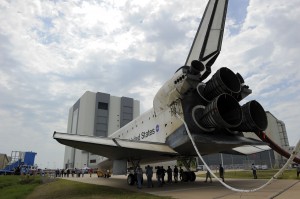
After this mission, Atlantis was expected to be modified to support the hydrogen-fueled Centaur-G Prime booster and was tasked to launch the Galileo spacecraft to Jupiter during a short “window” in May 1986. The loss of Challenger, however, stalled these plans and Atlantis did not fly again until December 1988, on another classified Department of Defense mission to launch a Lacrosse radar-imaging satellite. This flight also gained notoriety for its “secret EVA” mystery. The following year, 1989, brought two planetary missions, with Magellan dispatched to Venus in May and Galileo sent to Jupiter in October, after which Atlantis supported a pair of Department of Defense assignments in 1990: STS-36 in February and STS-38 in November.
In 1991, Atlantis supported her heaviest load of missions so far, launching three times from the Kennedy Space Center. Her first flight, STS-37 in April, deployed the Compton Gamma Ray Observatory and supported two ambitious EVAs, whilst STS-43 in August launched a Tracking and Data Relay Satellite (TDRS) and STS-44 in November carried another Department of Defense payload. The latter flight was Atlantis’ final dedicated military mission and established her as the shuttle fleet’s record-holder, with five DoD assignments to her credit. (By comparison, Discovery flew four dedicated DoD missions and Columbia only one.)
International Space Year, 1992, saw Atlantis fly a pair of missions to explore Earth’s atmosphere and climate, STS-45 in March, and a unique double-deployment flight of Italy’s Tethered Satellite and the European Retrievable Carrier (EURECA), STS-46 in July. She then underwent more than two years of maintenance and refurbishment, preparatory to the Shuttle-Mir era, and flew again in November 1994 on the STS-66 science mission. That mission marked her final “stand-alone,” non-station flight for the next 15 years. Between June 1995 and October 1997, Atlantis flew no less than seven Shuttle-Mir docking missions, ferrying thousands of pounds of hardware and supplies to the sprawling Russian station, delivering a shuttle-compatible docking module and dropping off and picking up seven U.S. long-duration astronaut residents.
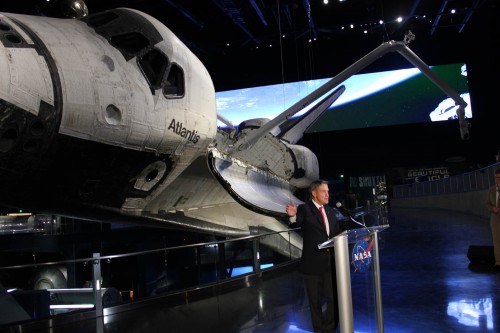
Another period of modification followed between 1997 and 1999, ahead of Atlantis’ role in the construction of the International Space Station. One of the most significant features of this period was the installation of the Multifunctional Electronic Display Subsystem (MEDS), a “glass cockpit” of instruments to improve the capabilities and situational awareness of her future crews. She completed two cargo delivery runs to the ISS in May and September 2000, before flying two major assembly missions: STS-98 in February 2001, which installed the U.S. Laboratory Module, “Destiny,” and STS-104 in July 2001, which added the Joint Airlock, subsequently known as “Quest.” The following year, 2002, brought STS-110 and STS-112 to begin the construction of the station’s expansive truss structure, and two more missions were baselined for Atlantis in 2003. Sadly, the loss of Columbia on 1 February of that year put paid to those plans.
In the wake of the Columbia disaster, it was clear that the shuttle program’s days were numbered, with a mandate to conclude assembly of the ISS by 2010 and retire the fleet. Atlantis’ participation in those final years was nothing short of exemplary: she flew seven missions, six of them to the station and another to service the Hubble Space Telescope for the final time in May 2009. Key ISS payloads for Atlantis during this period included Europe’s long-awaited Columbus laboratory, launched on STS-122 in February 2008.
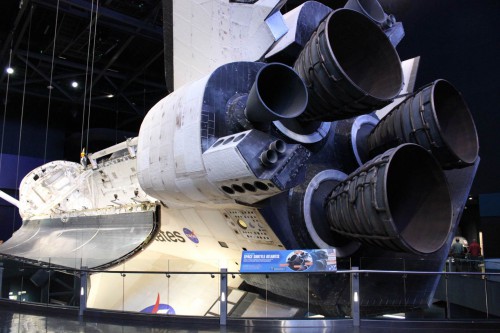
By the time her final mission, STS-135, touched down in July 2011, completing the shuttle program and heralding the final “Wheels Stop” with a distinct lump in everyone’s throat, Atlantis had flown 33 times into space during 26 years of operational service. This made her the second most-flown orbiter, after Discovery. A total of 156 men and women flew aboard her during that period, including representatives of the United States, Mexico, Belgium, Switzerland, Italy, France, Russia, Canada, and Germany. Of those individuals, Jerry Ross—the first human to record seven discrete space missions across his astronaut career—flew Atlantis the most, with five flights to his credit.
With the opening of “Space Shuttle Atlantis” at the KSCVC on Saturday, this storied machine will begin her 34th mission: to enthuse and inspire future generations of scientists, engineers, teachers, dreamers, and explorers. With this in mind, perhaps “Mission 34” will be Atlantis’ most important and far-reaching assignment of all.
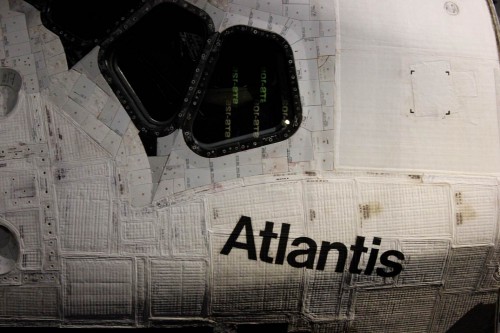
Want to keep up-to-date with all things space? Be sure to “Like” AmericaSpace on Facebook and follow us on Twitter:@AmericaSpace



